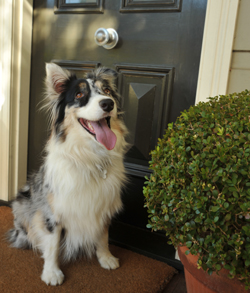Changes in the way Australians are living may impact on community health according to the Planning Institute of Australia and the Petcare Information and Advisory Service (PIAS), who’ve announced an $8,000 award for best practice planning for dogs and public open space.
According to Susie Willis from PIAS, ‘The recently released 2011 census data showed that the shift to apartment and townhouse living is becoming more pronounced, while previous studies have shown that lot sizes are decreasing as house sizes increase.’
Susie says, ‘It’s clear that the big backyard is not the priority it once was. Although there can be benefits associated with these changes, they have the potential to impact on the health benefits we receive from pet ownership as the presence, or not, of a backyard has been shown to have a direct impact on the likelihood of the household owning a pet.’
Susie recently spoke at the Healthy Cities conference where she outlined the benefits of pet ownership and the challenges our changing lifestyles may present.
‘Pet ownership has been shown to provide benefits for individual owners and the community as a whole. It’s a normal part of life for two out of three Australian homes but unless we take a more positive approach to pet ownership in higher density environments, we risk losing the many benefits pets bring to our lives.’
In many countries where high-density living has been standard for a long period of time, pets have been successfully integrated into city life.
‘Australia now has an opportunity to embrace design and policy initiatives that support pet ownership in our urban environments,’ says Susie. ‘These should include ready access to housing where pets are permitted, public open space that is suitable for pet owners as well as others, and appropriate access to public transport and outdoor cafes.’
For those living in higher density environments with a pet, PIAS provides the following information:
- Prospective owner should choose a pet that suits their lifestyle. Dogs and cats have very different care requirements and can exhibit a range of behavioural variations among breeds. Pets need to be chosen on their suitability rather than their looks or breed popularity.
- All pets have basic needs including food, water, exercise and health care. In addition, dogs have social needs and should be trained and socialised from a young age.
- Cats can make excellent pets for busy people living in small spaces. They don’t have the same exercise requirements as a dog and they are very quiet and clean.
- Working pet owners need assistance from time to time to help ensure their pet’s needs are met. Research shows that neighbours, friends and family frequently provide help in an informal way, but being able to obtain professional services can also help to reduce the burden for busy pet owners.
- Free resources to help pet owners are readily available. The free Selectapet service, run by PIAS, can help prospective pet owners choose an appropriate breed of dog or cat to suit their lifestyle.
- Another PIAS resource, Pets in the City, provides specific, practical information and tips to help owners responsibly manage pets in smaller spaces.
Interested in applying for the inaugural Pet Friendly Planning Award? 2012 entries demonstrating best practice planning for dogs and open space are being invited.

